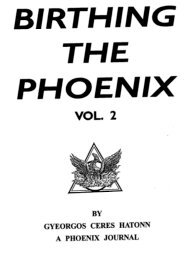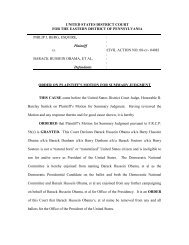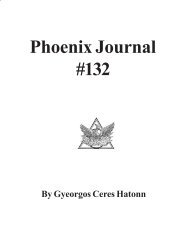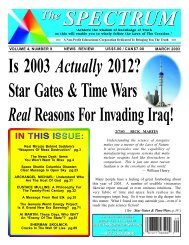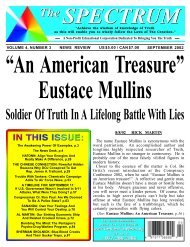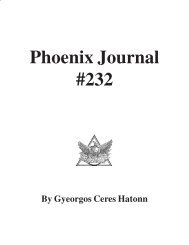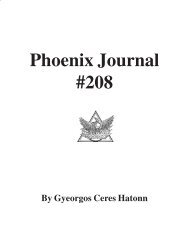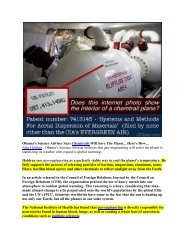Create successful ePaper yourself
Turn your PDF publications into a flip-book with our unique Google optimized e-Paper software.
perhaps was a much greater story than has been told. I will assume you are aware of the Biblical story, so<br />
will bring to your attention other, lesser known, stories.<br />
RIVERS OF BLOOD<br />
A. H. Gardiner translated an Egyptian eyewitness account (of what seems to be the same time period as<br />
the Exodus) found in an ancient papyrus, in Admonitions Of An Egyptian Sage From A Hieratic Papyrus<br />
In Leiden, generally called Papyrus Ipuwer. Here are some quotes from the Egyptian sage Ipuwer:<br />
“The river is blood.”<br />
“Men shrink from tasting; human beings thirst after water,” and “That is our water! That is our happiness!<br />
What shall we do in respect thereof? All is ruin.”<br />
Ipuwer 5:5 tells of the “very grievous murrain” that fell from the sky.<br />
And on the other side of the world during this same time period, the Manuscript Quiche, quoted in<br />
Brasseur, I, 130, tells that the Sun ceased moving, there were great earthquakes, and the water turned to<br />
blood.<br />
A red dust fell on all the Earth, causing all water to turn red and be described as like blood. Apollodorus<br />
tells of the mountain “Haemus” (blood) receiving its name because of the “stream of blood which gushed<br />
out of the mountain.” This was during a battle between Zeus and Typhon, and Typhon was struck by a<br />
thunderbolt. Zeus is the Greek equivalent of the Roman Jupiter (Zeus-piter, Zeus of Peter rank, Peter<br />
coming from the Hebrew PTR which is translated as interpreter. The interpreters in these religions were<br />
called “Peters”.). Typhon was a comet. This comet interacted with the planets Jupiter and Earth, causing<br />
the events of the Exodus and causing myths to be built to explain what happened.<br />
The Finnish epos of Kalevala tells of cosmic upheaval when the Earth was sprinkled with red milk. The<br />
Altai Tartars tells of when “blood turns the whole world red”.<br />
When the Israelites left Egypt, everything was covered with red dust. They passed through the Red Sea,<br />
which received its name because it was blood red, although now it is deep blue. They entered Edom,<br />
which name means red dust.<br />
After the red dust, there was a plague of “small dust” like “ashes of the furnace”. This was followed by a<br />
“very grievous hail”. The word “hail” in Hebrew is “barad” and means “meteorites”.<br />
According to all the other accounts, a comet approached the Earth. The small, hot dust preceded the rain<br />
of meteorites as the Earth entered into the tail of the comet, and red dust fell to the ground. The “thunder”<br />
in Hebrew is “kolot” which means “loud noises”. Hebrew for “thunder” is “raam”. The loud noises were<br />
caused by the crack of high-speed meteorites streaking through the air and crashing into the ground.<br />
Ipuwer said: “Cattle are left to stray, and there is none to gather them together. Each man fetches for<br />
himself those that are branded with his name.”<br />
2



